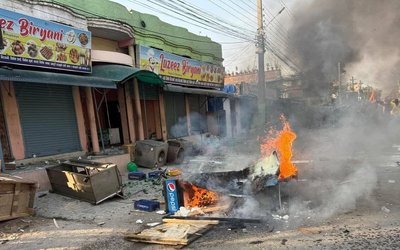More on News

RPP To Hold Protest In Restricted Areas Of Kathmandu On April 20
By NEW SPOTLIGHT ONLINE
1 day, 3 hours ago


Prof Dr Khadga KC assigned responsibility of TU Vice Chancellor
By NEW SPOTLIGHT ONLINE
3 days, 3 hours ago

It Is Time For The Congress To Take A Wise Decision: Dr. Koirala
By NEW SPOTLIGHT ONLINE
5 days, 2 hours ago

Dozens Police Personal Injured In Violent Clashes In Birgunj
By NEW SPOTLIGHT ONLINE
6 days, 2 hours ago










